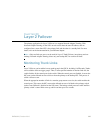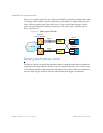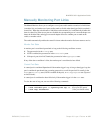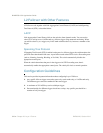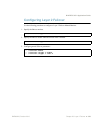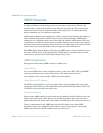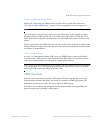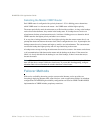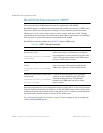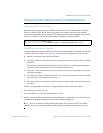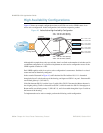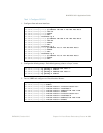
BLADEOS 6.5.2 Application Guide
332 Chapter 24: Virtual Router Redundancy Protocol BMD00220, October 2010
VRRP Overview
In a high-availability network topology, no device can create a single point-of-failure for the
network or force a single point-of-failure to any other part of the network. This means that your
network will remain in service despite the failure of any single device. To achieve this usually
requires redundancy for all vital network components.
VRRP enables redundant router configurations within a LAN, providing alternate router paths for a
host to eliminate single points-of-failure within a network. Each participating VRRP-capable
routing device is configured with the same virtual router IPv4 address and ID number. One of the
virtual routers is elected as the master, based on a number of priority criteria, and assumes control of
the shared virtual router IPv4 address. If the master fails, one of the backup virtual routers will take
control of the virtual router IPv4 address and actively process traffic addressed to it.
With VRRP, Virtual Interface Routers (VIR) allow two VRRP routers to share an IP interface across
the routers. VIRs provide a single Destination IPv4 (DIP) address for upstream routers to reach
various servers, and provide a virtual default Gateway for the servers.
VRRP Components
Each physical router running VRRP is known as a VRRP router.
Virtual Router
Two or more VRRP routers can be configured to form a virtual router (RFC 2338). Each VRRP
router may participate in one or more virtual routers. Each virtual router consists of a
user-configured virtual router identifier (VRID) and an IPv4 address.
Virtual Router MAC Address
The VRID is used to build the virtual router MAC Address. The five highest-order octets of the
virtual router MAC Address are the standard MAC prefix (00-00-5E-00-01) defined in RFC 2338.
The VRID is used to form the lowest-order octet.
Owners and Renters
Only one of the VRRP routers in a virtual router may be configured as the IPv4 address owner. This
router has the virtual router’s IPv4 address as its real interface address. This router responds to
packets addressed to the virtual router’s IPv4 address for ICMP pings, TCP connections, and so on.
There is no requirement for any VRRP router to be the IPv4 address owner. Most VRRP
installations choose not to implement an IPv4 address owner. For the purposes of this chapter,
VRRP routers that are not the IPv4 address owner are called renters.




